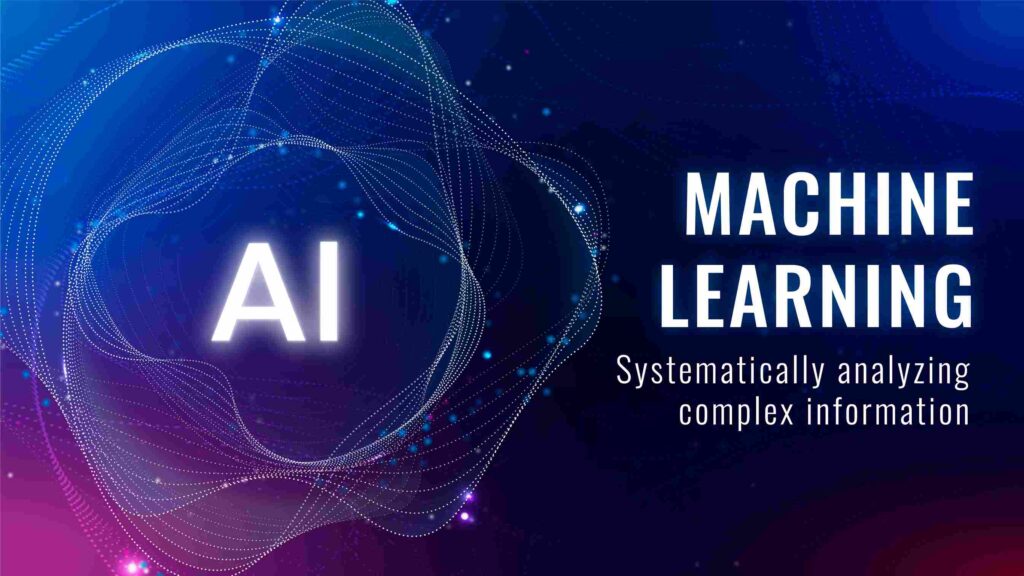Introduction
Why Businesses Can’t Ignore AI Anymore
Artificial Intelligence (AI) is a commercial need in 2025, not simply a trendy term. AI is pervasive in how businesses function, compete, and prosper, from automating customer support to predicting market trends. Companies that disregard AI run the danger of slipping behind, losing customers, and going out of business.
AI can analyze vast amounts of data in real time, generate insights that humans might miss, and make predictions with astonishing accuracy. Whether you’re a startup looking to disrupt or an enterprise aiming to optimize, AI development services can give you that competitive edge.
Consumers also expect smarter, faster, more personalized experiences. And AI makes that possible. Think chatbots that understand context, recommendation engines that feel psychic, or fraud detection systems that learn and evolve. If your business doesn’t leverage AI, your competitors surely will.
AI Trends Dominating the 2025 Tech Landscape
The AI landscape in 2025 is more dynamic and powerful than ever before. Several key trends are driving its evolution:
- Hyper-personalization: AI enables businesses to tailor experiences down to the individual level in real time.
- Generative AI: Tools like ChatGPT, DALL·E, and Sora are transforming content creation, design, and video generation.
- Edge AI: Processing data directly on devices (like smartphones or IoT gadgets) reduces latency and boosts performance.
- AI-as-a-Service (AIaaS): Many companies now offer modular AI tools via the cloud, making implementation faster and more affordable.
- Responsible AI: As adoption grows, there’s increased emphasis on fairness, transparency, and accountability.
With these trends shaping the market, businesses must choose AI partners who not only offer technical expertise but also stay ahead of the innovation curve.
What Are AI Development Services?
Definition and Scope of AI Development
AI development services refer to specialized offerings provided by tech companies to design, build, and deploy AI-powered solutions tailored to a client’s needs. These services go beyond mere coding—they involve strategic planning, data engineering, algorithm development, model training, testing, and integration.
AI development covers a wide range of technologies, including:
- Machine Learning (ML): Systems that learn from data and improve over time.
- Deep Learning: Complex neural networks for tasks like image and voice recognition.
- Natural Language Processing (NLP): Enables machines to understand human language.
- Computer Vision: Teaching machines to interpret and understand visual data.
- Robotic Process Automation (RPA): Automating repetitive business processes using AI.
A group of AI engineers, data scientists, software developers, and subject matter experts often provide these services, collaborating to provide customized solutions.
Common Use Cases Across Industries
AI isn’t one-size-fits-all—it’s adaptable, and that’s its superpower. Here’s how different industries are leveraging AI in 2025:
- Retail: AI-driven product recommendations, demand forecasting, and customer sentiment analysis.
- Healthcare: AI for diagnostics, patient monitoring, drug discovery, and personalized treatment plans.
- Finance: Fraud detection, risk analysis, algorithmic trading, and customer service bots.
- Manufacturing: Predictive maintenance, quality control using computer vision, and supply chain optimization.
- Marketing: AI for campaign personalization, content generation, and predictive analytics.
These examples highlight why choosing the right AI development partner is so crucial—industry-specific expertise can make or break your AI initiative.
Benefits of Investing in AI Development Services
Operational Efficiency and Automation
One of the most immediate and apparent benefits of AI development services is increased operational efficiency. In 2025, businesses will increasingly rely on AI to simplify workflows, eliminate manual labor, and improve departmental performance.
Imagine a system that automatically schedules deliveries based on traffic, customer preferences, and supply chain data. Or a chatbot that handles 90% of customer queries without human intervention. This isn’t science fiction—it’s everyday reality thanks to AI.
With AI, repetitive tasks like data entry, invoicing, email responses, and inventory updates can be automated, allowing your team to focus on more strategic, high-impact work. AI doesn’t sleep, doesn’t make typos, and works 24/7—leading to major savings in time and cost.
AI also brings agility. For example, predictive analytics powered by AI can help companies adjust marketing campaigns on the fly or anticipate demand spikes before they happen. This kind of real-time decision-making gives businesses a huge competitive edge.
Data-Driven Decision Making
We’re living in a data-rich world, but raw data is useless without context. That’s where AI comes in. It turns mountains of data into actionable insights—spotting patterns, predicting behaviors, and identifying opportunities that human analysts might miss.
In 2025, the businesses thriving are the ones making smart, data-driven decisions—and AI development services are the engine behind that. With AI tools, companies can:
- Segment customers based on behavior and predict churn
- Optimize pricing strategies in real-time
- Detect fraud before it causes damage
- Monitor sentiment across social platforms
Moreover, AI can simulate outcomes, helping leaders choose the best course of action based on millions of scenarios. Whether you’re launching a product, entering a new market, or adjusting your supply chain, AI helps you make smarter moves—faster.
And with explainable AI (XAI) gaining traction, these insights aren’t just accurate—they’re also understandable. This builds trust, accountability, and strategic clarity across the organization.
Challenges in AI Development Projects
Data Privacy and Ethical Concerns
As powerful as AI is, it comes with significant responsibilities—especially in 2025, when data privacy regulations are stricter than ever and consumers are more aware of how their data is used.
AI systems often rely on vast amounts of user data to train models. Mishandling this data can lead to legal issues, reputational damage, or loss of customer trust. Companies must comply with global regulations like the GDPR, CCPA, and newer frameworks introduced in 2025, including data residency laws and consent requirements.
Then there’s the question of ethical AI. What happens if your model shows bias? Or if it makes decisions that humans can’t explain? Choosing a responsible AI development partner means working with a team that prioritizes fairness, transparency, and accountability.
Look for service providers that:
- Use ethical data sourcing methods
- Implement bias audits
- Build explainable AI models
- Prioritize user consent and data anonymization
In 2025, ethics aren’t just a compliance checkbox—they’re a business differentiator.
Integration with Legacy Systems
AI doesn’t operate in a vacuum. To be truly effective, it must integrate with your existing tech stack—whether that’s your CRM, ERP, website, or mobile app. And that’s where many businesses hit a roadblock.
Legacy systems, often built a decade ago, weren’t designed for AI. They lack APIs, operate in silos, or use outdated databases. Trying to inject AI into such systems without careful planning can lead to delays, cost overruns, or subpar performance.
The best AI development companies in 2025 offer full-stack integration services. They assess your infrastructure, build connectors, and create middleware to ensure seamless communication between old and new systems.
Cloud adoption also plays a key role here. Migrating data and applications to the cloud makes AI deployment faster, more secure, and more scalable. If you’re still stuck with on-premise solutions, now’s the time to consider hybrid or full cloud integration.
Types of AI Solutions Offered by Development Companies
Machine Learning and Deep Learning Services
Machine Learning (ML) is the backbone of most AI systems, and by 2025, its capabilities will be more advanced—and accessible—than ever. ML uses statistical algorithms to learn from data and make predictions or decisions without being explicitly programmed.
Common ML services offered by development firms include:
- Predictive analytics: Forecasting customer behavior, demand trends, and more.
- Recommendation engines: Suggesting products, content, or services.
- Customer segmentation: Identifying target audiences for personalized marketing.
- Anomaly detection: Spotting fraud, quality issues, or operational failures.
Deep Learning, a subset of ML, uses neural networks to simulate human-like learning. It’s especially useful for complex tasks like:
- Speech recognition (think Siri or Alexa)
- Image classification (like facial recognition or quality inspection)
- Autonomous decision-making (self-driving vehicles or robotics)
Development companies typically offer pre-trained models for common tasks, or custom solutions built from scratch depending on your data and goals.
Natural Language Processing (NLP) and Computer Vision
Natural Language Processing (NLP) allows machines to understand, interpret, and generate human language. With tools like ChatGPT leading the way, NLP has exploded in both capability and demand in 2025.
NLP services offered by AI firms include:
- Chatbots and virtual assistants
- Sentiment analysis for social listening and brand monitoring
- Speech-to-text transcription for calls, meetings, and media
- Language translation and content generation
Computer Vision, on the other hand, deals with teaching machines to “see” and make sense of visual inputs. It’s used in:
- Retail: Smart checkout systems and in-store surveillance.
- Healthcare: Analyzing X-rays and MRI scans.
- Manufacturing: Identifying defects on assembly lines.
- Agriculture: Monitoring crop health via drones.
AI development companies combine these technologies to build multimodal systems—like smart assistants that can both see and speak—offering businesses unprecedented levels of automation and insight.
How to Choose the Right AI Development Company
Evaluating Technical Expertise and Experience
Choosing the right AI development service provider is a high-stakes decision—your company’s future innovation, efficiency, and competitiveness might depend on it. In 2025, the market is saturated with vendors promising cutting-edge solutions, but not all of them deliver. So how do you separate the real pros from the pretenders?
Start by evaluating technical expertise. Check if the company has experience with the specific AI technologies you need, whether it’s machine learning, NLP, computer vision, or generative AI. Ask about:
- Programming languages they specialize in (e.g., Python, R, Java)
- Frameworks and libraries they use (e.g., TensorFlow, PyTorch, Keras, OpenCV)
- Platforms they work with (e.g., AWS AI, Google Cloud AI, Microsoft Azure AI)
- Toolsets for model deployment, testing, and monitoring
A good AI firm won’t just throw buzzwords at you—they’ll walk you through their methodology, show you past work, and suggest tech stacks based on your business goals, not their convenience.
Also, look for domain expertise. AI in finance differs vastly from AI in healthcare or eCommerce. A firm with industry experience will understand compliance issues, user behavior, and the KPIs that really matter in your space.
Assessing Project Management and Communication Skills
AI projects are complex and often iterative. They require constant feedback, testing, and fine-tuning. That’s why project management and communication skills are just as important as technical know-how.
Does the company offer a dedicated project manager? Do they follow agile or SCRUM methodologies? What tools do they use for tracking progress—Jira, Trello, or custom dashboards? These questions can help you gauge how efficiently the firm runs its operations.
Clear communication is non-negotiable. You’ll need frequent updates, transparent timelines, and honest discussions about challenges. Look for partners who ask insightful questions, listen to your needs, and are proactive in offering suggestions.
During the vetting process, pay attention to their responsiveness. Are they quick to follow up? Do they explain technical things in simple terms? These early interactions are often a preview of how the collaboration will play out.
Comparing Pricing Models and Contract Options
Understanding Cost Structures in AI Development
AI development isn’t cheap—but the ROI often justifies the investment. That said, knowing how pricing works can save you from surprises down the line.
In 2025, most AI development companies offer one or more of the following pricing models:
- Fixed Price: Ideal for projects with clearly defined requirements. You pay an agreed amount regardless of how much time it takes. It’s predictable but less flexible.
- Hourly Rate: Common for open-ended or exploratory projects. You pay based on actual time spent. Offers flexibility but can become expensive if not managed properly.
- Retainer: A flat monthly fee for ongoing work like updates, maintenance, or consulting.
- Milestone-Based: Payments are tied to the completion of specific stages. This structure aligns with incentives and is great for transparency.
Make sure you get a detailed quote and scope of work. Clarify what’s included—like data preparation, model training, deployment, documentation, and post-launch support. Otherwise, you could end up paying extra for features you assumed were covered.
Choosing Between Onshore, Offshore, and Nearshore Options
Geography plays a big role in pricing and project dynamics. Here’s a breakdown:
- Onshore (same country): Easier communication, better time zone alignment, and fewer cultural barriers. However, usually the most expensive option.
- Offshore (different continent): Cost-effective, especially when hiring from regions like South Asia or Eastern Europe. However, time zone differences can hinder communication.
- Nearshore (neighboring country): A balance between cost and convenience. Shared time zones make collaboration easier, and travel is more feasible if needed.
Whichever route you choose, always prioritize skills and communication over low costs. A cheaper team that misses deadlines or produces poor work will cost you more in the long run.
Red Flags to Avoid When Hiring AI Development Services
Overpromising and Under-Delivering
One of the biggest red flags in 2025 is companies that promise the moon. If a vendor guarantees overnight success, says they can implement “any” AI solution with zero data preparation, or downplays the complexity of your request—run the other way.
AI is powerful but it’s not magic. Quality AI development involves extensive planning, data cleansing, training cycles, testing, and iteration. A good firm will be honest about timelines, limitations, and dependencies. They’ll also set realistic expectations from day one.
Be cautious of companies that don’t ask many questions or want to start development without a proper discovery phase. AI solutions need context. If your vendor isn’t deeply curious about your goals, users, and data—they’re not the right fit.
Lack of Transparency and Poor Documentation
Transparency is a core pillar of successful AI projects. If your vendor doesn’t offer access to progress reports, code repositories, or model performance metrics, you might be in trouble.
Good AI development firms maintain:
- Detailed documentation for every phase of the project
- Clear data governance policies
- Version control and audit logs
- Open communication about risks and bugs
Documentation ensures long-term maintainability. If you part ways with your vendor in the future, another team should be able to pick up where they left off. Without proper documentation, that becomes nearly impossible—and costly.
Also, beware of “black box” solutions. You deserve to know how your model works, what data it uses, and how decisions are made. In 2025, responsible AI isn’t just about functionality—it’s about accountability.
Conclusion
Choosing the right AI development services in 2025 is not just about finding skilled coders—it’s about finding a strategic partner who understands your business, respects your data, and is committed to long-term success. With AI shaping the future of nearly every industry, now is the time to invest wisely and innovate boldly.
From evaluating technical expertise to avoiding red flags, every step in the hiring process matters. Don’t just go for the flashiest demo or the lowest price. Choose a team that can grow with you, adapt with you, and deliver intelligent solutions that move the needle for your business.
Whether you’re launching your first AI-powered tool or scaling existing systems, one thing is clear: the right development partner will be your greatest asset in 2025 and beyond.
FAQs
1. What industries benefit the most from AI development in 2025?
Healthcare, finance, retail, manufacturing, logistics, and marketing are some of the top industries leveraging AI for automation, insights, and improved customer experiences.
2. How long does it take to develop an AI solution?
Depending on complexity, timelines range from a few weeks (for simple chatbots) to several months (for deep learning systems or custom predictive models).
3. Is AI development expensive in 2025?
Costs vary widely. Simple AI integrations might start at $10,000, while advanced solutions can exceed $500,000. ROI often justifies the expense.
4. How do I prepare my business for AI integration?
Start by auditing your existing data, defining your goals, and aligning teams. Partner with an AI service provider that offers consulting and discovery sessions.
5. Can small businesses afford AI development services?
Yes! Thanks to AI-as-a-service platforms and pre-trained models, small businesses can now implement AI affordably with the help of the right development partner.


